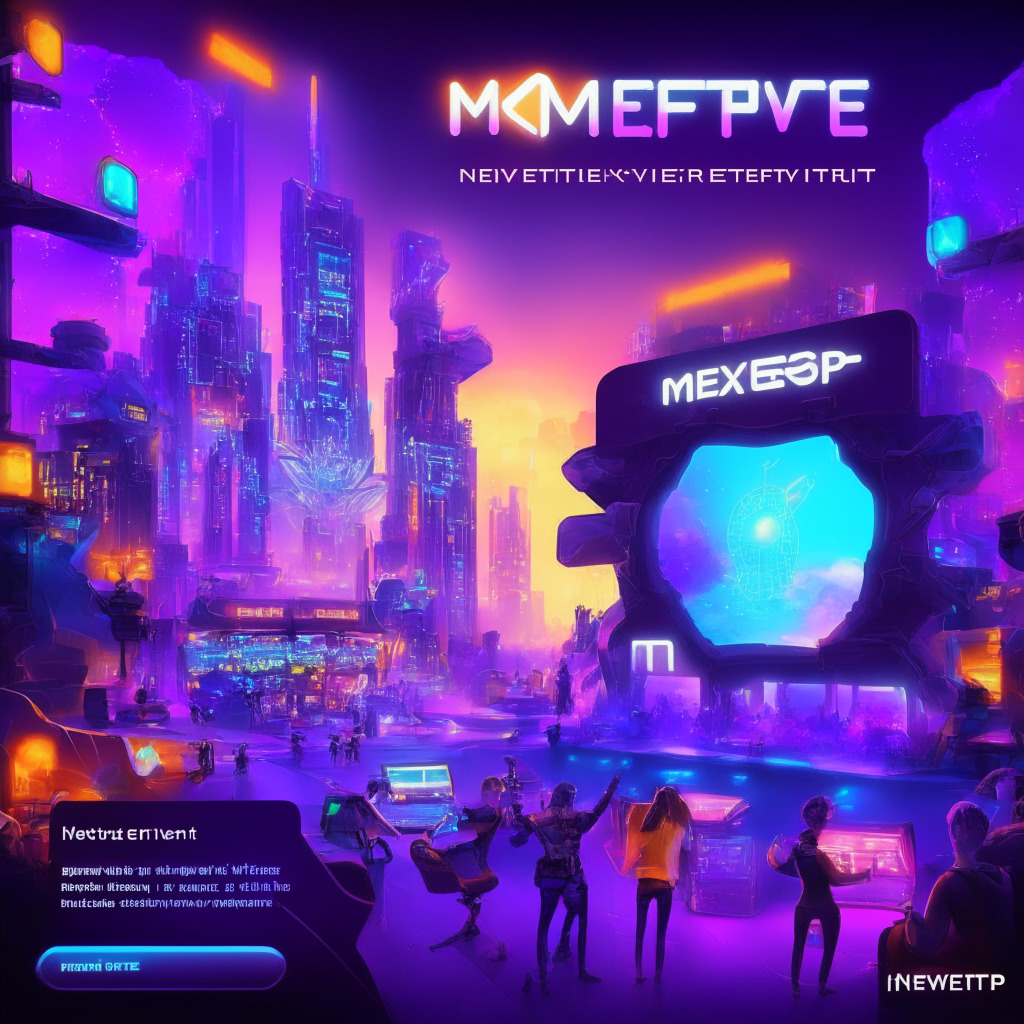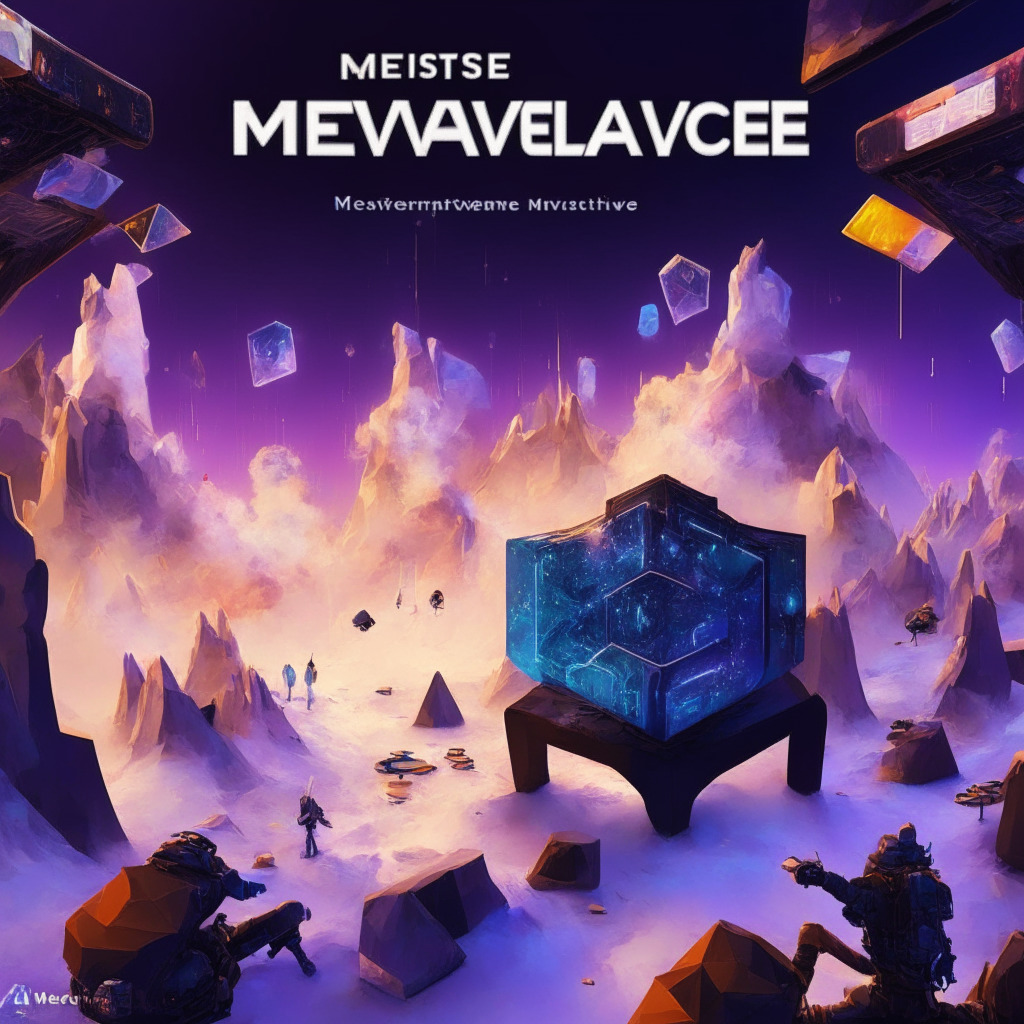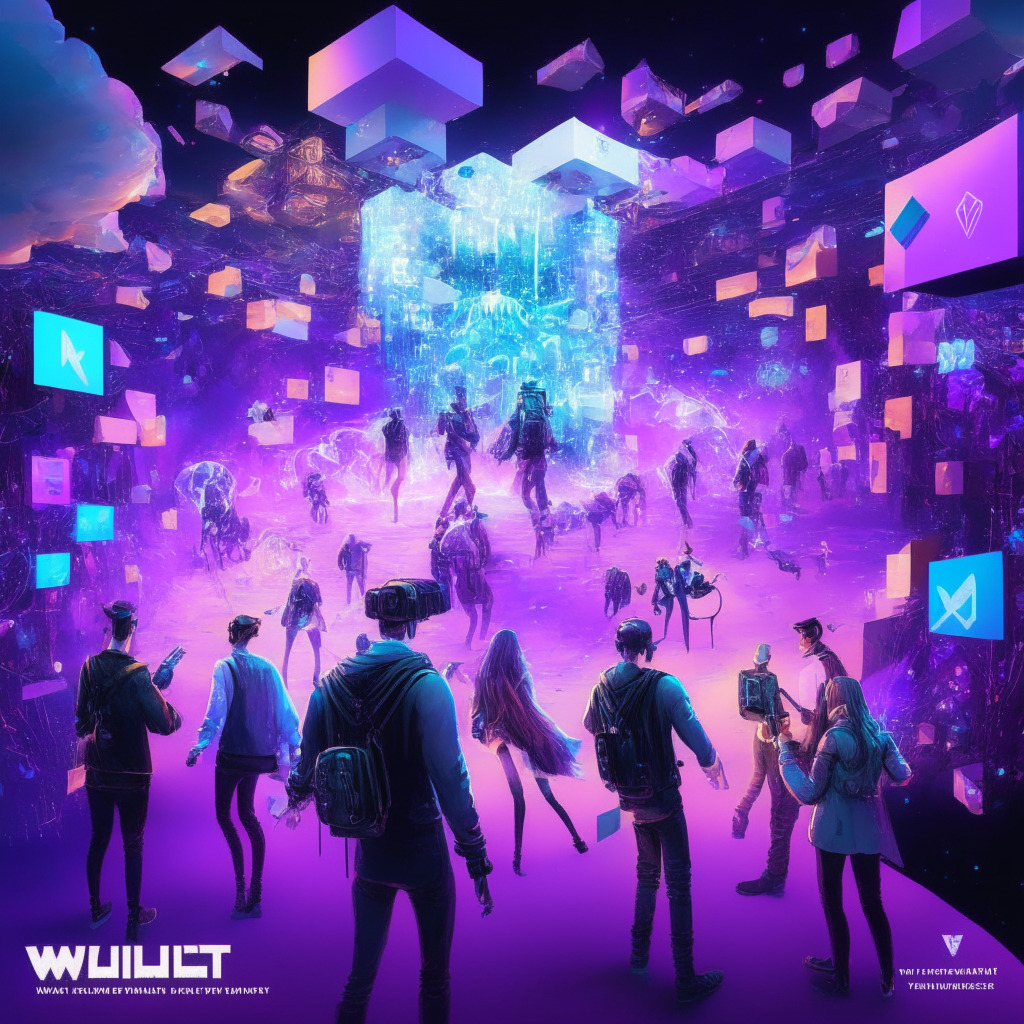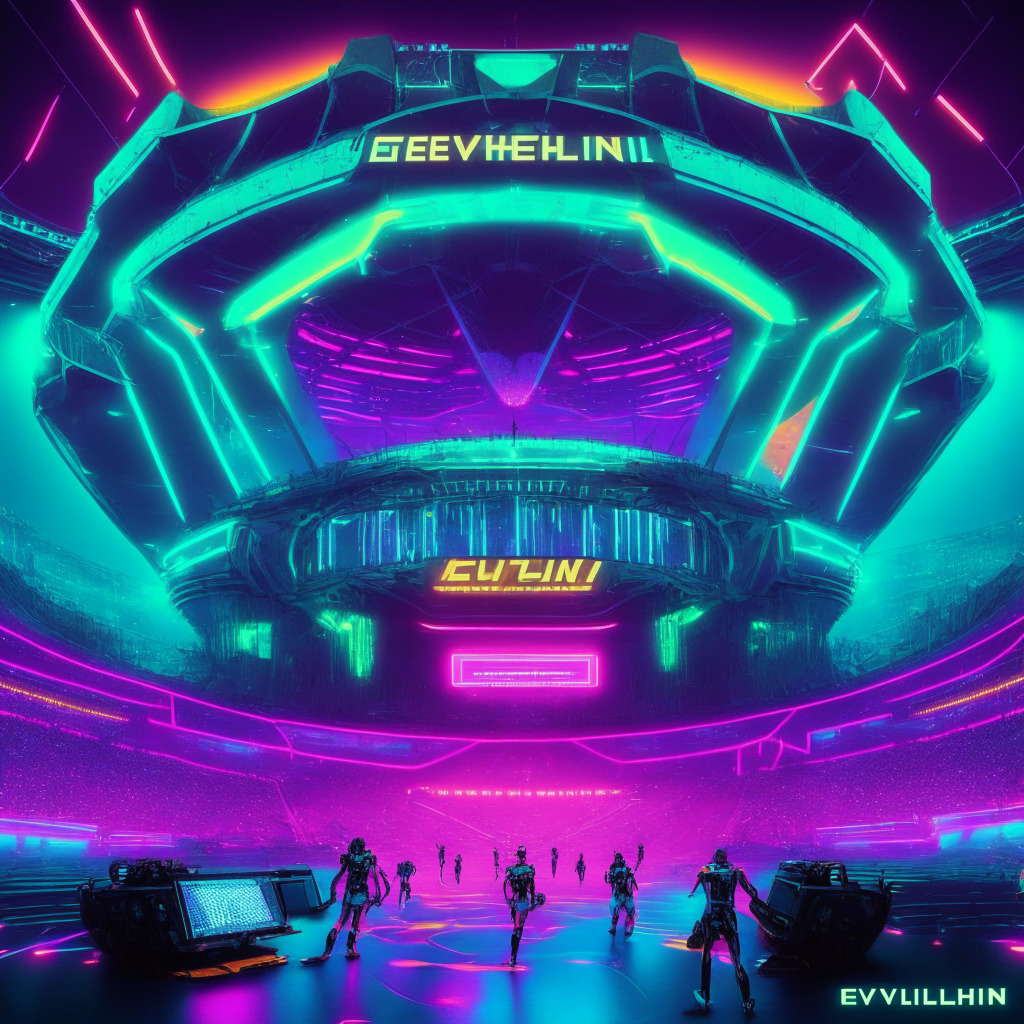A New York couple’s divorce proceedings revealed a hidden stash of 12 Bitcoin after a forensic accountant was hired. This highlights blockchain’s transparency and immutability, making asset concealment difficult. Interestingly, blockchain technology has also facilitated positive experiences, like virtual weddings in the Metaverse, showcasing its versatile potential.
Search Results for: Meta
Meta’s Instagram Enters Decentralized Space: New App Competes with Twitter, Challenges Ahead
Meta, Instagram’s parent company, plans to launch a decentralized, text-based conversation app to compete with Twitter. The app will work in tandem with other decentralized social media platforms, broadening user reach and fostering independence from potential control by a single entity. However, concerns arise about limited oversight, problematic content, and ensuring user safety.
Adidas’ Metaverse Leap: Success in NFT Collaboration and Web3 Integration Challenges
Adidas’ leap of faith into the BAYC NFT deal has proven successful, venturing into the metaverse in collaboration with Yuga Labs, Punks Comic, and Gmoney. Despite initial uncertainty, the partnership aligned with Adidas’ values and led to a rewarding experience, raising $23 million, not including royalties from secondary market sales. This success highlights the potential benefits of integrating values and taking risks in the expanding NFT market and metaverse.
Ripple Acquires Metaco for $250M: A Bold Move in Asset Tokenization Amid SEC Battle
Ripple acquires Switzerland-based blockchain firm Metaco for $250 million, marking its entry into the asset tokenization field. This aims to expand Ripple’s enterprise offerings and reach in the international market, providing customers access to advanced technology for custody, issuance, and settlement of tokenized assets.
Ripple Acquires Metaco: The Future of Blockchain, CBDCs, and Custody Sector Opportunities
Ripple acquires Swiss custodian Metaco for $250 million to transform the cross-border payment market and explore Central Bank Digital Currencies and tokenized assets. This deal, amid evolving regulations and emerging opportunities, signifies an exciting time for blending traditional finance with the crypto landscape.
Rise and Fall of PUNK ETF: Metaverse Potential vs Ethical Concerns
The Subversive Metaverse ETF (PUNK), launched to oppose Meta’s metaverse strategy, is shutting down after a 30% loss over 15 months. As skepticism about the metaverse grows, the importance of balancing innovation with ethical practices and scrutinizing key industry players’ motives is highlighted.
Ripple Acquires Metaco: Boon for Crypto Custody or Integration Challenge?
Ripple acquires Swiss digital asset custodian and tokenization provider Metaco for $250 million, aiming to expand its enterprise services. With access to Ripple’s customer base and resources, Metaco’s growth is expected to accelerate as they target the booming institutional crypto custody market, predicted to reach $10 trillion by 2030.
Ripple Acquires Metaco, Tether’s New Strategy, and the Latest in Crypto Markets and Regulations
Ripple acquires Swiss-based Metaco for $250 million, expanding enterprise offerings and accelerating Metaco’s growth. Tether announces 15% net realized operating profits to be allocated towards Bitcoin purchase for reserve diversification. Meanwhile, Coinbase expands services in Singapore and China issues guidelines for NFT treatment.
Ripple Acquires Swiss Crypto Custodian Metaco for $250M: Growth Amid Regulatory Challenges
Ripple Labs acquires Swiss crypto custody provider Metaco in a $250 million deal, aiming to expand its offerings and provide secure storage and management of crypto assets for institutional investors amid rising concerns about secure asset storage.
Ripple Acquires Metaco for $250M: Bold Move or Regulatory Risk? Pros, Cons, and Main Conflict
Ripple acquires Swiss-based crypto custody provider, Metaco, for $250 million to diversify and expand its offerings. The acquisition aims to help Ripple overcome challenges like the ongoing SEC lawsuit and broaden its presence beyond the US market.
Ripple Acquires Metaco for $250M: Exploring Future of Tokenization and Institutional Adoption
Ripple acquires Swiss digital asset custody company Metaco for $250 million, aiming to expand institutional offerings and equip customers with technology to custody, issue, and settle tokenized assets. The partnership anticipates accelerated growth and stronger market impact in the evolving world of tokenization.
Revolutionizing Music Experience in Metaverse: Idol III, NFTs, and Licensing Challenges
NFT startup Relicsxyz partnered with DJ Steve Aoki to launch Idol III, a digital metaverse-compatible music player in the form of an Ethereum NFT collectible, revolutionizing music experiences within virtual worlds. The device fosters a dedicated community of music fans and NFT collectors while addressing licensing and copyright issues.
All-in-One Metaverse Platform: Launchpad XYZ’s Vision for DeFi, NFTs, Gaming & 10M Web3 Users
Launchpad XYZ aims to create an all-in-one hub for DeFi trading, NFTs, play-to-earn gaming, and the metaverse, offering a user-friendly portal to the decentralized web. The $LPX utility token provides access to benefits and shapes the platform’s direction, emphasizing education and user security.
Digital Assets as Legitimate Property: A New Era for the Metaverse and Digital Natives
The growing number of digital natives investing in cryptocurrencies and NFTs has led to the proposition of recognizing digital assets as legitimate property. Co-founder of The Sandbox, Sebastien Borget, believes governments should treat the digital economy as a “real economy” and acknowledge the value digital natives attribute to these assets while addressing concerns such as volatility, regulation, and environmental impact.
Apple’s Mixed-Reality Headset: Boon or Bust for Metaverse Tokens?
Apple’s mixed-reality headset release could revitalize the metaverse industry and impact metaverse token prices, like MANA and SAND. However, widespread adoption by everyday users and immersive virtual experiences are crucial for the overall success of metaverse projects.
Meta’s AI Pursuits: Boon or Bane for the Metaverse Revolution?
Facebook’s rebranding to Meta Platforms Inc signals a leap into the metaverse, but recent AI-focused activities have stirred speculation. Despite setbacks, Meta emphasizes AI’s importance in metaverse development, enabling boundary-pushing products and greater accessibility for users.
SHIB’s Potential Renaissance: Shibarium and Metaverse Impact on Price and Popularity
Shiba Inu (SHIB) experienced a 0.5% price increase in the past 24 hours, while the crypto market gained 1.5%. Launches of Shibarium and SHIB: The Metaverse could positively impact SHIB’s long-term outlook, possibly leading to a renaissance towards year-end.
Decentralizing Hollywood: MetaCannes Explores Web3’s Impact on Film Industry Future
MetaCannes explores the Web3-driven Film3 movement, showcasing how decentralization is transforming film creation, marketing, and distribution. This virtual festival seeks to familiarize industry leaders with Film3 via livestream as it disrupts Hollywood’s traditional structure and gatekeepers.
Animoca Brands’ Financial Growth: A Rising Force in NFTs, Gaming, and Metaverse
Hong Kong-based Animoca Brands is in a financially strong position with $194 million in stablecoin reserves and $566 million in liquid digital assets. The company’s incomes surged from $148 million in Q4 2021 to $573 million in Q1 2022, driven by NFT and token sales. Despite challenges, Animoca Brands’ resilience and growing acceptance of blockchain technology reflect its commitment to advancing digital property rights and entertainment.
FedNow and Metal Blockchain Integration: Stablecoins, Privacy, and Financial Future Debated
The Federal Reserve’s upcoming integration with Metal Blockchain has sparked debates on stablecoins, privacy, and financial system plans. Metal Blockchain’s collaboration with instant payment service FedNow aims to enable rapid stablecoin conversions and potentially create interconnected “bank chains” for a secure, oracle-independent blockchain ecosystem.
Debunking Meta’s Metaverse Abandonment: AI Integration, Competition, and Future Plans
Meta’s Head of Global Business Group, Nicola Mendelsohn, dispels rumors of abandoning metaverse plans, stating the company’s continued commitment to the project. Despite financial setbacks, Meta aims to combine generative AI and metaverse technology for a groundbreaking digital future.
MetaMask and PayPal Join Forces: Revolutionizing Crypto Accessibility in the US and Beyond
The collaboration between MetaMask and PayPal enables American users to buy ETH and transfer it between the platforms, making cryptocurrency more accessible. This partnership expands PayPal’s crypto assets and introduces the “Buy Crypto” feature within MetaMask, reflecting an exciting future for blockchain technology and crypto markets.
Tether’s Bitcoin and Precious Metals Investments: Transparency Boost or Market Risk?
Tether’s recent attestation report reveals approximately $1.5 billion worth of Bitcoin, accounting for nearly 2% of its total reserves. The inclusion of Bitcoin and precious metals, totaling $3.4 billion, aims to enhance transparency for USDT stablecoin holders. However, concerns arise about potential risks due to market fluctuations.
Roblox, Blockchain, and the Future of Gaming: Exploring the Open Metaverse Model
Roblox’s record daily active users and 22% YoY revenue increase showcase its strong user base and potential as a “proto-metaverse.” Questions arise on adopting blockchain technology and integrating non-fungible tokens (NFTs) for an “open metaverse” approach, enabling users to own and use digital assets across platforms.
Metaverse Debate: Tech World Divided Between Potential and Abandonment
This article debates the metaverse’s future, as some claim it has run its course and been abandoned by businesses, while others like Tim Sweeney argue that there are still 600 million monthly active users across platforms, and tech giants continue investing in its potential.
Metaverse: A Fading Fad or Unstoppable Future? Debating Views of Industry Leaders
Epic Games CEO Tim Sweeney humorously defended the Metaverse’s future, countering an article claiming its decline. Noting the vast active user base across platforms and major corporations’ development and investment within the Metaverse, Sweeney’s optimism stands firm.
Alibaba’s Metaverse Launchpad and Web3’s Impact on Mainstream Industries: Embracing or Warning?
Major Web2 players, including Alibaba and Sports Illustrated, are entering the Web3 space, launching metaverse and NFT platforms on blockchains like Avalanche and Polygon, signaling growing interest and integration of Web3 technology into mainstream experiences.
Uncovering Hidden Gems: Web3, Metaverse, and the Importance of Early Trend Spotters
With Web3 and the metaverse gaining traction, recognizing early catalysts and lesser-known impactful projects is essential. Enthusiasts and investors should pay attention to whispers and murmurs, potentially leading to the next major development in blockchain and the metaverse.
Alibaba Cloud’s Metaverse Launchpad on Avalanche: Breakthrough or Marketing Ploy?
Alibaba Cloud’s launchpad Cloudverse enables businesses to deploy metaverses on the Avalanche blockchain network, revolutionizing customer engagement in partnership with traditional technology enterprises. This collaboration marks Alibaba’s growing interest in and adoption of blockchain technology.
Metaverse Mashup: Grealish, Heldens, and the Future of Virtual Experiences vs Security Concerns
Manchester City footballer Jack Grealish and DJ Oliver Heldens performed a DJ set in the OKX Collective metaverse, highlighting the growing interest in metaverse platforms. Despite exciting opportunities, the security, safety concerns, and potential risks of digital assets in decentralized technologies need addressing.
Metaverse Entertainment: Jack Grealish, Oliver Heldens & the Future of Live Events
OKX hosted an exclusive DJ set in its OKX Collective metaverse, featuring Manchester City player Jack Grealish and DJ Oliver Heldens. This “Mixing in the Metaverse” event highlights the potential of blockchain technology and virtual experiences beyond traditional financial applications.
Sotheby’s NFT Marketplace and Meta’s Struggles: Blockchain Evolution or Growing Pains?
Sotheby’s auction house launched an on-chain NFT marketplace featuring unique artists, while marketplace Blur introduced Blend, a perpetual NFT lending protocol. Neobank Cogni introduced soulbound NFTs for wallet holders’ KYC information, showing rapid progress and adoption of NFTs in various sectors despite challenges like market imbalances and high-stake project losses.































